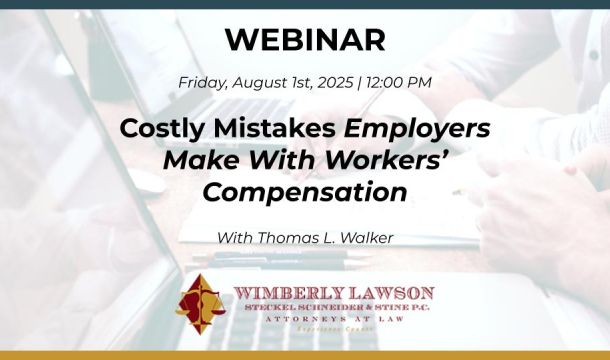Happy 50th Birthday, ADEA!
This year, the Age Discrimination in Employment Act (ADEA) turns 50 years old. To mark this milestone, the EEOC held a public meeting on Tuesday entitled "The ADEA @ 50 - More Relevant Than Ever." At the meeting, several experts addressed the issue of age discrimination in employment from different perspectives.
Laurie McCann, a senior attorney for AARP Foundation Litigation, cited hiring discrimination and mandatory retirement as persistent problems that older workers face across industries. She called on the EEOC to strengthen ADEA protections and enforcement. "The ADEA should not be treated as a second-class civil rights statute. On this 50th Anniversary of the ADEA, AARP urges the EEOC to take bolder action to ensure older workers are treated fairly at work…" McCann told the Commission.
Sara Czaja, director of the Center for Research and Education on Aging and Technology Enhancement (CREATE), explained that research refutes assumptions that older workers are less productive, technophobic or inflexible. Czaja discussed practical ways employers could do a better job of integrating older workers into the workforce by recognizing their value and by matching their skills and abilities with work environments. "Unfortunately, numerous negative stereotypes about older workers still exist that often prevent or have a negative impact on employment opportunities for older people. These stereotypes can also prevent organizations from realizing the wealth of positive assets, such as wisdom, experience, and reliability that older workers can bring to the table," said Czaja.
Nearly two-thirds of workers age 55-64 report their age as a barrier to getting a job, as reported by a 2017 AARP survey. A comprehensive study in 2015 using resumes for workers at various ages found significant discrimination in hiring for female applicants and the oldest applicants, according to a co-author of the research, Patrick Button, Assistant Professor of Economics at Tulane University and a researcher with the National Bureau of Economic Research Disability Research Center (NBER).
Reality check: In 2000, 23 percent of the U.S. population was in the 45-84 age group. By 2010, this portion will rise to 37.2 percent, and by 2020 it will hit 39 percent, according to the U.S. Census Bureau. A survey from Pew Research found that 70 percent of today's workers expect to work after retirement. In other words, the number of workers who are protected by the ADEA is increasing.
And don't forget—it is not only workers who are getting older—jury pools are getting older also. Age discrimination trials present a special challenge because most everyone knows how it feels to get older, or has close relatives or friends who are older, which means jury members are more likely to be sympathetic to age discrimination plaintiffs.
The Takeaway: Employers can prevent age discrimination claims (or minimize liability when the inevitable hard-headed plaintiff pursues a meritless claim) in the same ways that it can prevent other discrimination claims:
- Be consistent and as objective as possible in discipline and evaluating employee performance
- Train supervisors and managers to avoid stereotyping employees on the basis of age (or any other protected characteristic)
- Don't ignore performance or discipline issues just because an employee has worked at the company "forever;" address them when they occur, just as the company should do with all employees.
- Monitor interview questions to ensure that none of them are intended to screen out older workers (or other protected class workers).

Kathleen J. Jennings is a former principal in the Atlanta office of Wimberly, Lawson, Steckel, Schneider, & Stine, P.C. She defends employers in employment matters, such as sexual harassment, discrimination, Wage and Hour, OSHA, restrictive covenants, and other employment litigation and provides training and counseling to employers in employment matters.
Related Content
Get Email Updates
Recent Content

How to Audit Employment Discrimination Laws Compliance

TPS Update (As of 6/17/2025)

TPS Designation for Honduras and Nicaragua Automatically Extended, But the Date is Uncertain

President Trump Discourages Criminal Enforcement of Agency Rules

Supreme Court Suggests Trump Can Fire Agency Heads without Cause
